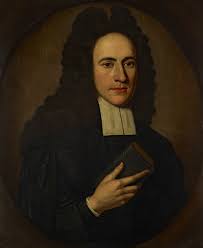O Come Thou DaySpring - Emily Woodard
My New Testament professor introduced the study of the Gospels with this phrase from 2 Corinthians 4:6, “the light of the knowledge of the glory of God in the face of Jesus Christ.” It is a fitting description of what we have in those four books that narrate for us the life and ministry of Jesus who is God’s full and final revelation and “the radiance of His glory” (Heb. 1:1). In 2 Corinthians 4, Paul is writing about his ministry of proclaiming the gospel. He contrasts the work of the god of this world, who has blinded the minds of unbelievers to keep them from seeing the light of the gospel, with that of God, who has caused light to shine in the hearts of believers so that they might see “the light of the knowledge of the glory of God in the face of Jesus Christ.”In doing so, Paul connects the action of God at creation, he "who said ‘Let light shine out of darkness,’” with his work in the new creation (2 Cor. 5:17) of the hearts of those who have been brought to faith, or to use Peter’s phrase, those who have been called “out of darkness [and] into… marvelous light” (1 Pet. 2:9). This is what was promised in the prophets (e.g. Isaiah 42:16), and what Jesus himself said he came to do: “I have come into the world as light, so that whoever believes in me may not remain in darkness” (John 12:46).
Isaiah looked forward to the day when those “who walked in darkness have seen a great light; and those who dwelt in a land of deep darkness, on them has light shone” (Isaiah 9:2). Zechariah, too, anticipated the fulfillment of these words as hespoke of the salvation soon to be revealed (the way for which his son John would prepare), “the sunrise shall visit us from on highto give light to those who sit in darkness and in the shadow of death, to guide our feet into the way of peace” (Luke 1:78-79). In addition to Isaiah, Zechariah may have been reflecting the words of Malachi who wrote of the rising of the sun of righteousness. I first encountered Malachi 4:2 in the lyrics of a song that was playing on the background of a slideshow from a mission trip: “But for you who fear my name, the sun of righteousness shall rise with healing in its wings. You shall go out leaping like calves from the stall.” The song was folksy and memorable (“But for You Who Fear My Name” by The Welcome Wagon) but since I didn’t grow up around livestock, I was curious about the imagery of the verse. The internet came through wonderfully to satisfy my curiosity. If you, too, are somewhat agriculturally ignorant, please take a minute to search “young calves going out for spring” on YouTube (posted by The Funky Farmer). What a contrast the soft, green grass and open, spring air is from a musty, cramped stall in a barn. The delight that the young calves experience as they leap and bound about is palpable. And, that picture it is meant to tell us something of the joy and wonder that will accompany the day of the Lord for those who fear his name.
Malachi’s “sun of righteousness” and Zechariah’s “sunrise” (or, “dayspring” in the King James) seem to serve as the background for a verse of the familiar Advent hymn, “O Come, O Come, Emmanuel.”
O come, Thou Dayspring, from on high,
And cheer us by Thy drawing nigh;
Disperse the gloomy clouds of night,
And death's dark shadows put to flight.
The arrival of Jesus changes everything, in the same way that the rising sun cuts through the darkness of night. “Hail redemption’s happy dawn… Christ is born in Bethlehem!” (from “See, amid the Winter’s Snow”).
The New Testament’s usage of light doesn’t stop with the announcement of the arrival of the Sun/Son of Righteousness. If God has shone on our hearts with the knowledge of Christ and we have recognized Jesus as the light of the world, then we too are “light in the Lord… children of light” (Eph. 5:8). Believing in the light, we have become “sons of light” (John 12:36). Paul reminds the Colossians through his prayer for them, that we are to live in thankfulness to the Father, “who has qualified [us] to share in the inheritance of the saints in light” (Col. 1:12). In Philippians 2, he connects our doing things without grumbling or complaining to our shining as lights in the world (vv. 14-15). 1 Thessalonians 5 exhorts those who are “children of light, children of the day” to “keep awake and be sober…having put on the breastplate of faith and love, and for a helmet the hope of salvation” (vv. 5-8).
In the midst of all the gloom and darkness around us in this world (and there is a lot) let us not forget that in Jesus, a light shines. The Sun of Righteousness rises with healing in his wings, and the God who spoke light at creation is still at work making new creations, calling children out of darkness and into his marvelous light. What a wonderful time of year to reflect in thankfulness upon our own journey from darkness to light and to remember our calling to live as children of the light.
Rejoice! Rejoice! Emmanuel
Shall come to thee, O Israel.




Comments
Post a Comment